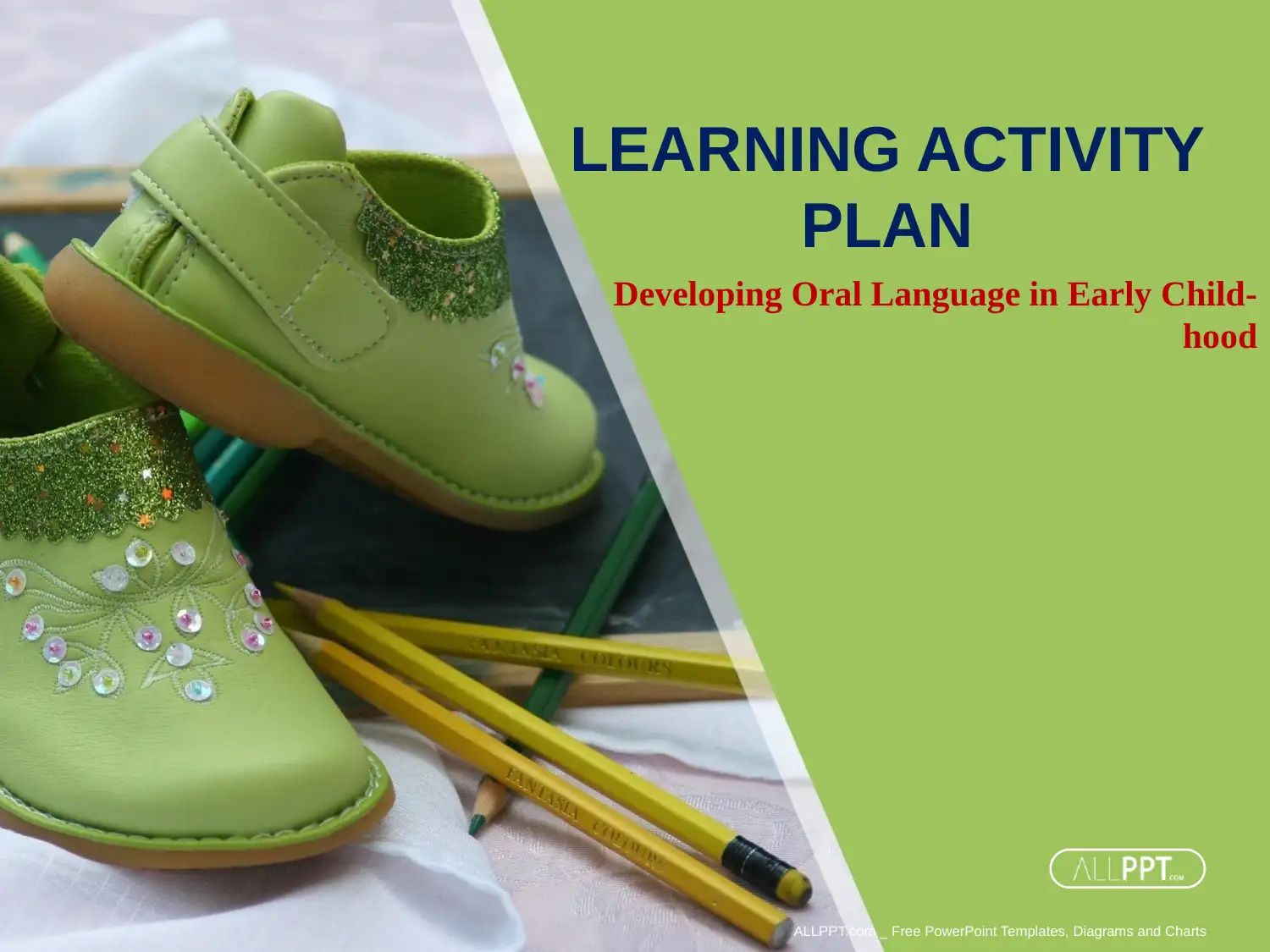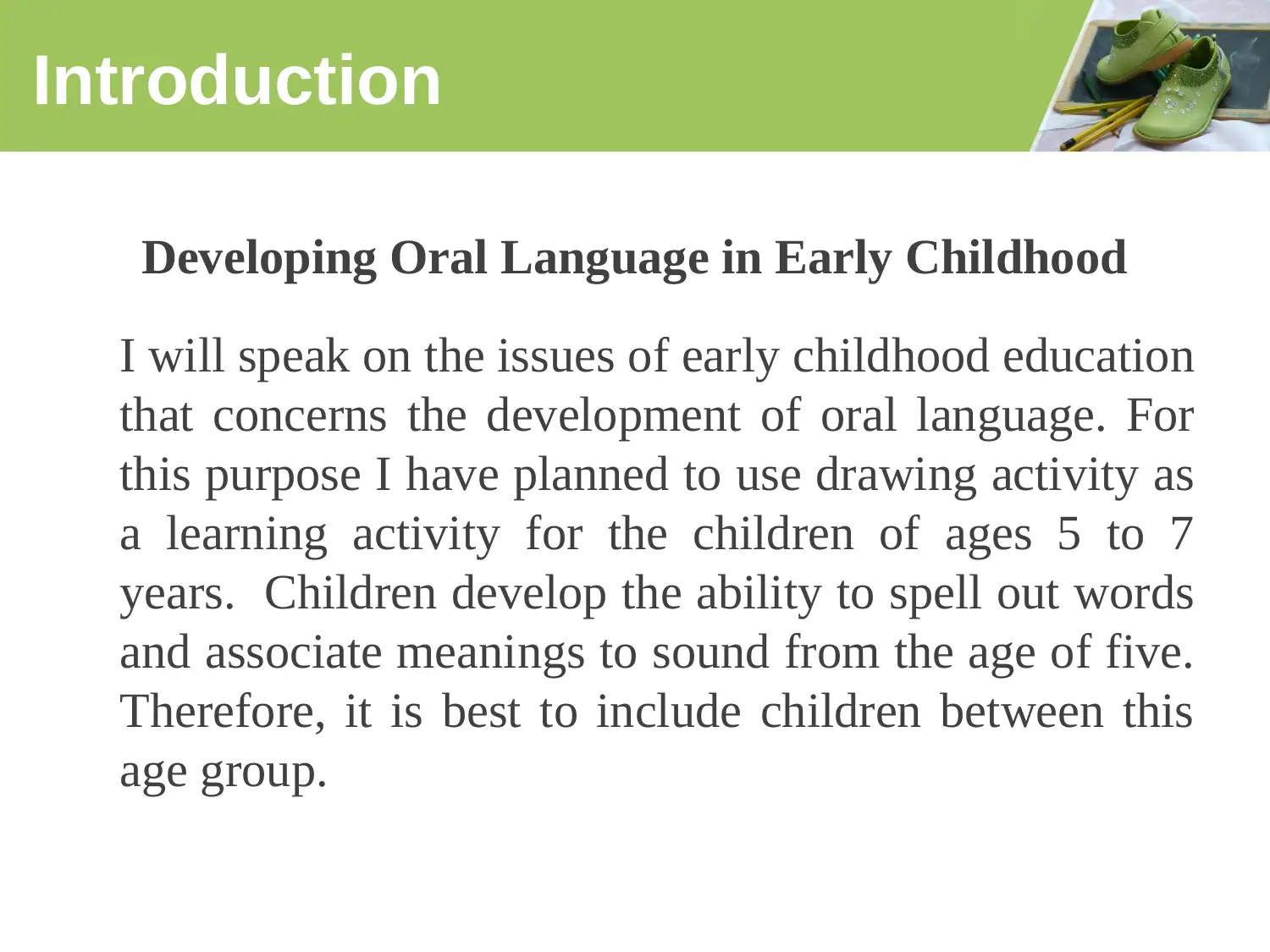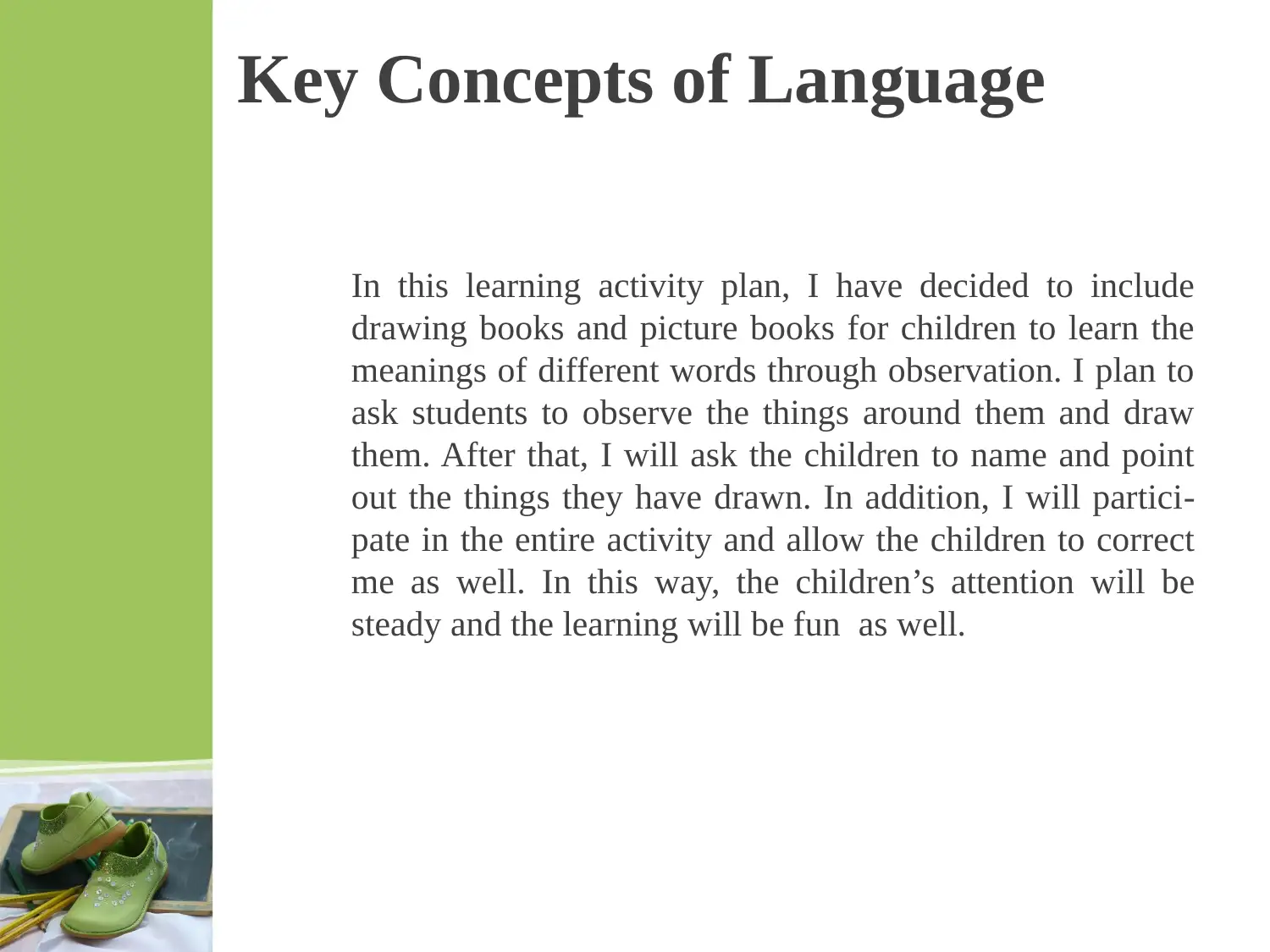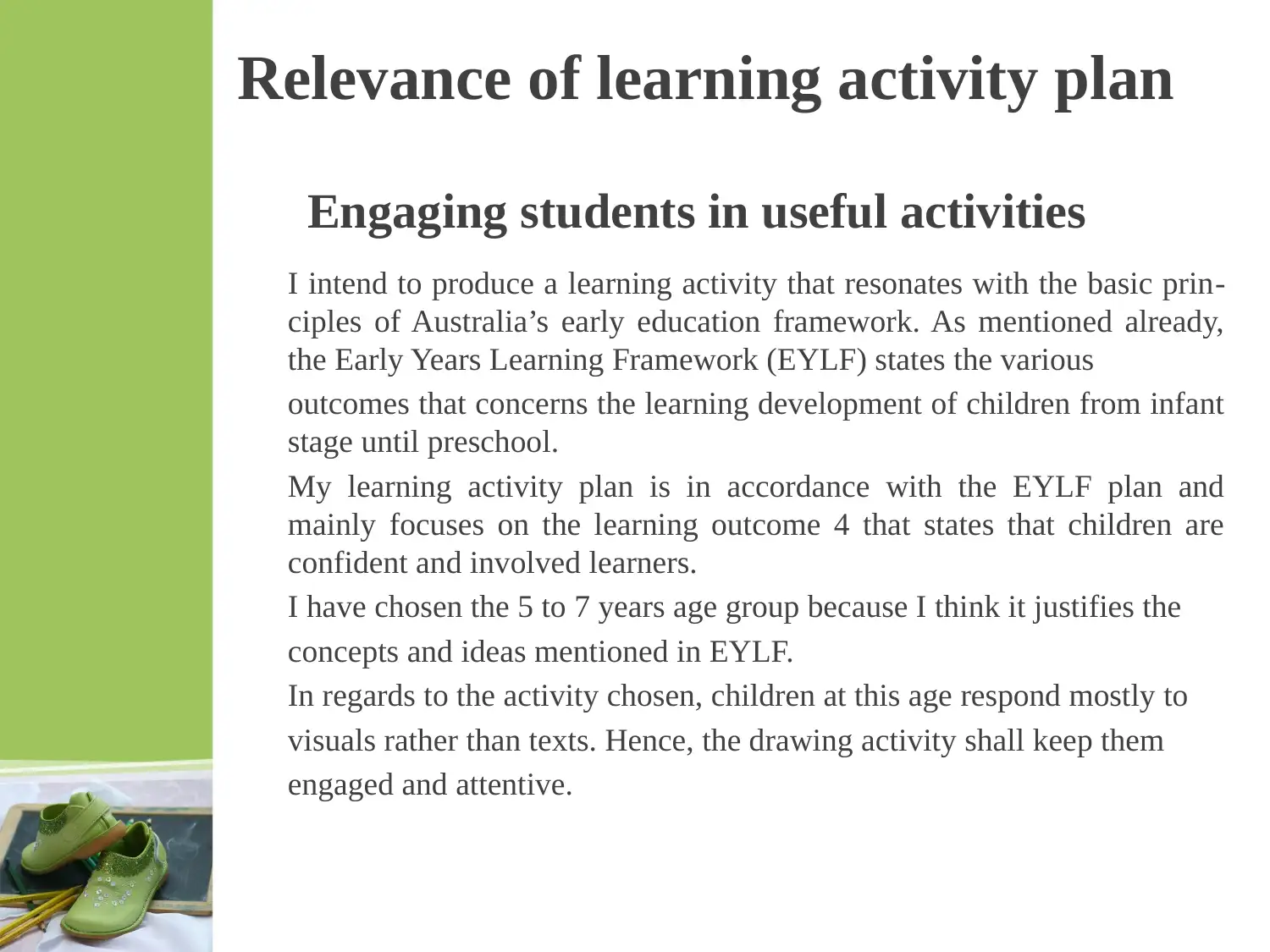Oral Language Development: A Learning Activity Plan for Children
VerifiedAdded on 2021/04/16
|7
|584
|96
Presentation
AI Summary
This presentation discusses the development of oral language in early childhood, focusing on children aged 5 to 7 years. It highlights the importance of phonology and semantics in language development and proposes a drawing activity to engage children in learning. The activity encourages children to observe, draw, name, and discuss objects, promoting vocabulary and language skills. The learning activity plan aligns with the Early Years Learning Framework (EYLF), specifically targeting the outcome of children being confident and involved learners. The presentation emphasizes the role of educators in creating innovative learning experiences and reiterates the significance of early oral language development in a child's overall growth. Desklib provides access to similar study resources to aid students.
1 out of 7














![[object Object]](/_next/static/media/star-bottom.7253800d.svg)